Winterizing hydrangeas: keep them protected from inclement weather
Winterizing hydrangeas correctly will keep them happy and healthy throughout the coldest season
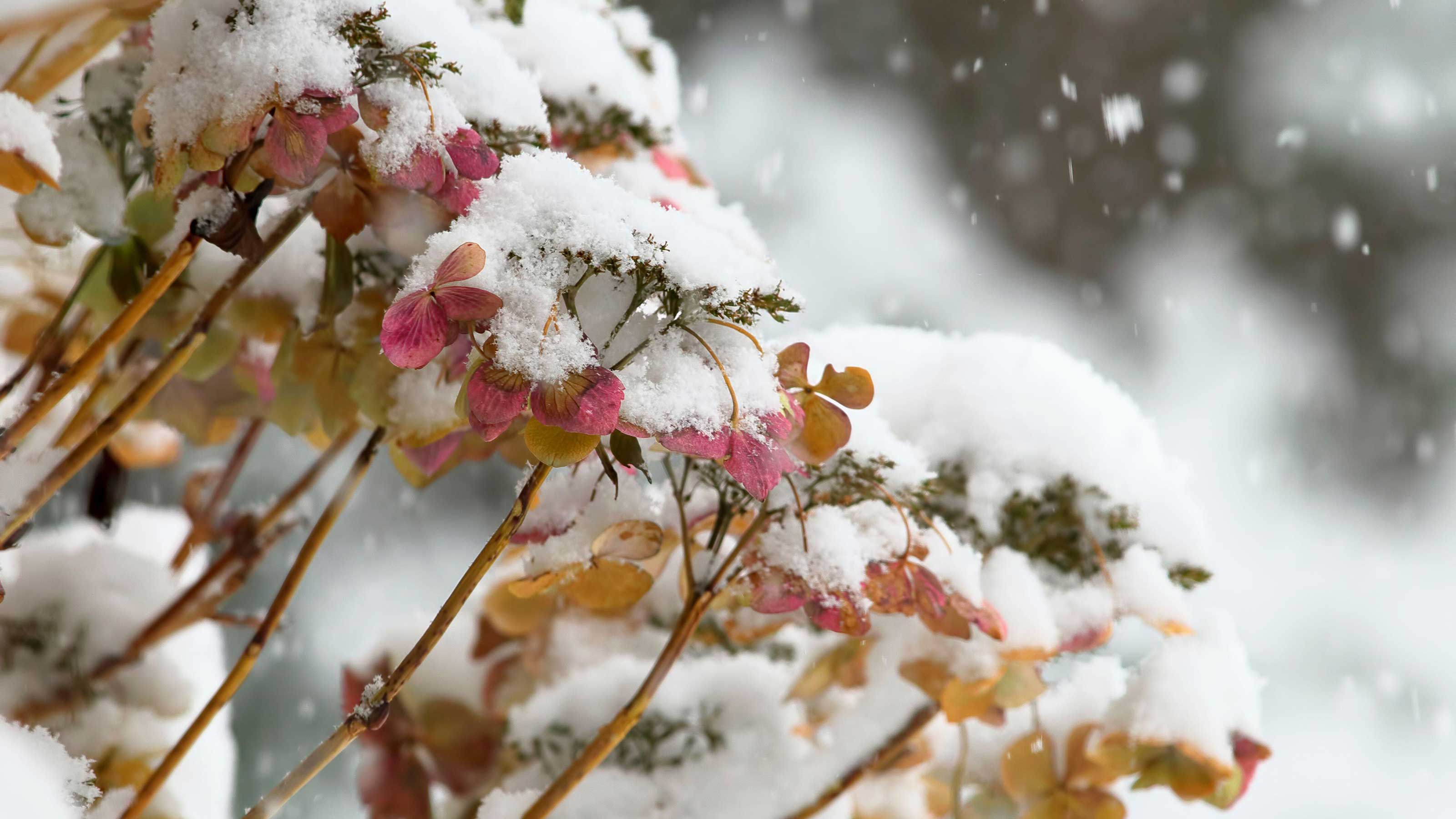

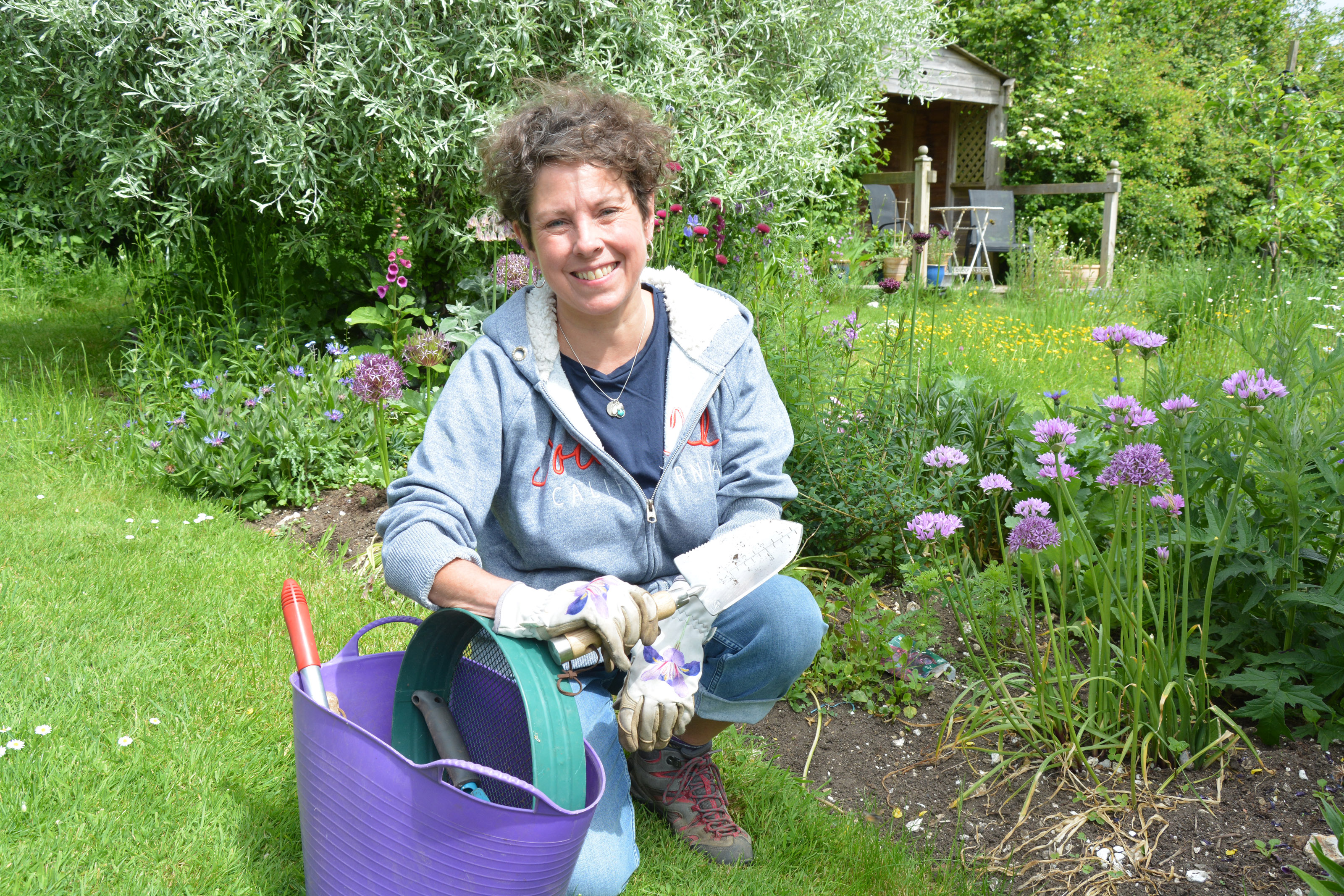
There are a few things to do when it comes to winterizing hydrangeas to ensure they stay healthy and bounce back to full glory once warmer weather returns.
Fashion is a fickle thing and hydrangeas, which were once regarded as slightly fuddy-duddy and dowdy, are back in favor. Whether you opt for the traditional Hydrangea macrophylla (mophead and lacecap varieties) or go large with a climbing Hydrangea petiolaris, you can be sure that your plant will add something very special to the garden.
Hydrangeas are hardy shrubs and able to withstand most of what fall and winter can throw at them. In fact, they thrive in damp soil (the ‘hydra’ part of their name is the give-away here) and hate a sunny, dry spot so seasonal rains don’t bother them at all. However, a bit of protection from inclement winter weather is a good idea.
We have a small mophead hydrangea growing in a planter on the patio and this month I will be moving it to a protected spot and making sure it is healthy and pest-free to give it the best possible chance of survival.
Winterizing hydrangeas grown in the ground
Learning how to winterize hydrangeas is fairly straightforward if you're growing them in borders or flower beds. The key thing to do is to mulch their root area with well-rotted organic matter (manure or compost), leaf mold, or bark chippings to help protect the plants from winter. This helps insulate the roots in the event of very cold weather, and also retains moisture in the soil and suppresses weeds.
However, don’t add mulch if the soil is dry or frozen, as it will lock out moisture and lock in the cold. Mild, damp conditions are best for mulching.
If you are growing a climbing hydrangea variety against a wall or fence, it's also wise to check it is securely attached and tie in any loose ends to prevent damage or injury in high winds.
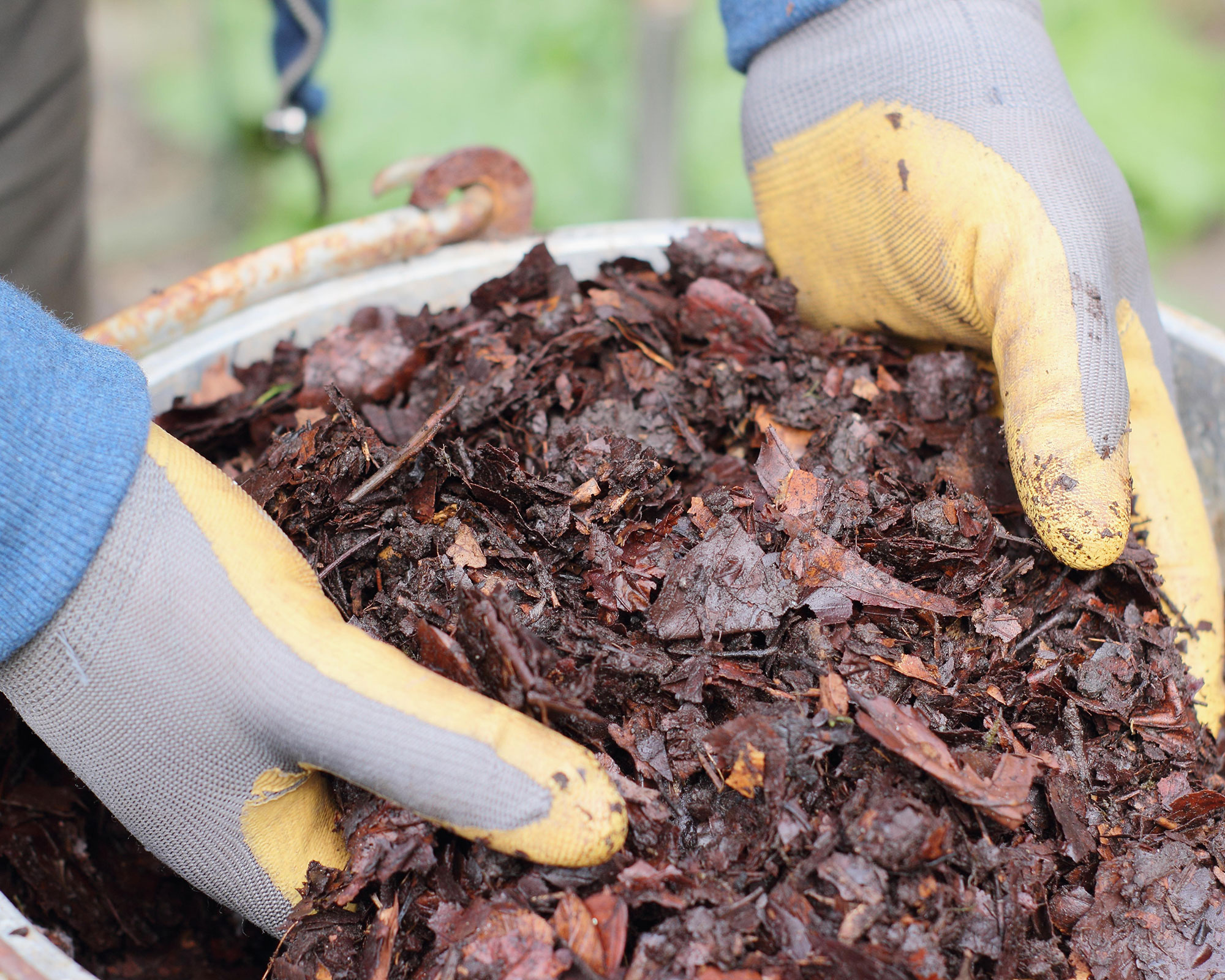
Leaf mold is an excellent winter mulch as it insulates roots and enriches the soil
Winterizing hydrangeas in pots
Winterizing hydrangeas in pots can be more of a challenge for various reasons.
Firstly, although they like damp soil, constantly waterlogged compost can kill plants because the wetness forces the oxygen out and the roots ‘drown’ as a result. You can help combat this by moving your potted hydrangea somewhere sheltered, such as against a wall that creates a rain shadow.
Also, raise your planter off the ground, either on feet or bricks or a moveable wheeled support. This allows excess water to escape from the base, reducing the risk of saturation.
Hard frosts are also a serious concern. Compost in pots freezes faster than soil in a border and it can crack containers open and also freeze the roots of plants, which will eventually finish them off. So, to protect the plants from frost, as well as the pots, you need to wrap the containers in an insulating horticultural fleece – available on Amazon – or bubble wrap, with a layer of mulch or straw on top of the compost. If you haven’t got any fleece, use old net curtains, blankets or newspaper. Don’t let the insulation cover the top of the pot as some rain needs to get in, and make sure the drainage holes are kept open.
If extremely cold weather is forecast, you may need to move the planter into a frost-free space such as a greenhouse until temperatures rise again.
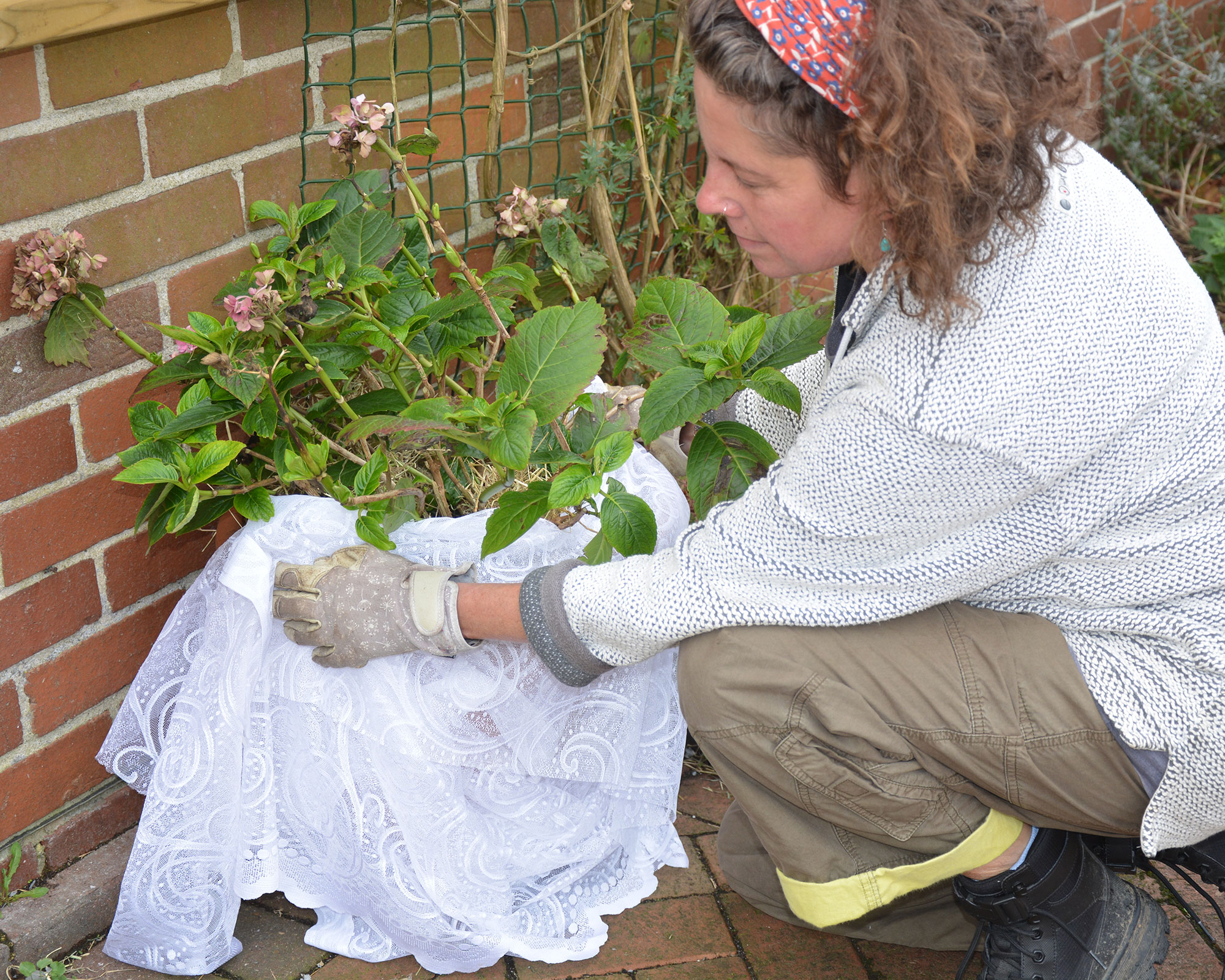
Wrapping a container-grown hydrangea will help prevent the compost from freezing, which can kill the plant and wreck the planter
Finally, protect your container hydrangeas against vine weevil grubs. You can tell if you have a problem with this pest because the adults bite distinctive notches in the edges of leaves. Their small, creamy grubs do greater damage by hatching in the soil and eating the roots of plants, often killing them.
Your best defense at this time of year is a solution of BugClear Ultra Vine Weevil Killer – available on Amazon – which despatches the grubs and protects the hydrangea from other pests including mealybugs and aphids.
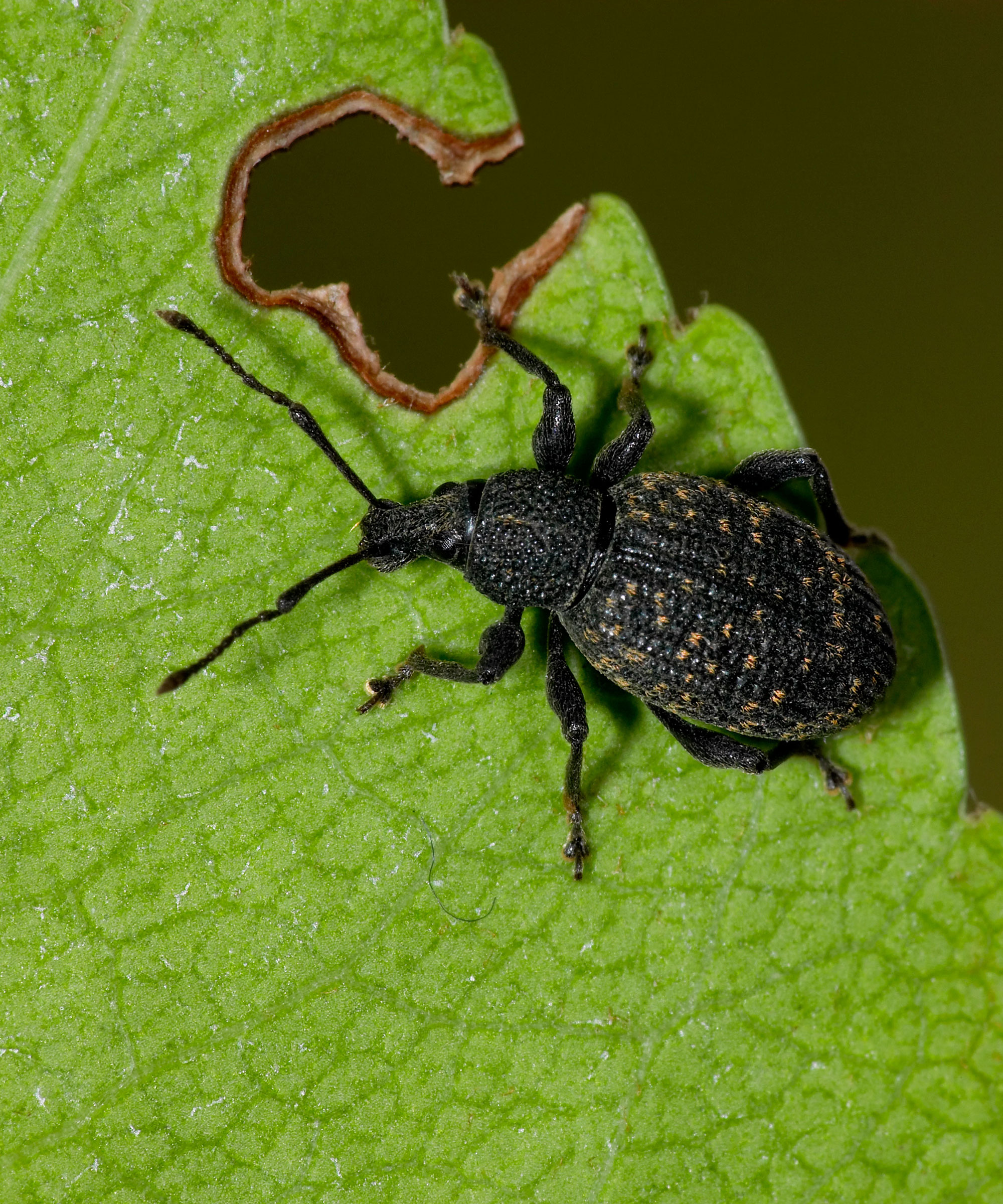
Watch out for vine weevils
Should you prune your hydrangea before winter?
Although they are hardy plants, pruning hydrangeas should be done in late winter or early spring or in the case of climbing hydrangeas, in summer.
Yes, it is tempting to remove the dead flowerheads once they have faded in autumn and give the plant a trim as we do with many deciduous hardy shrubs. But, be patient and leave them in place, for they help protect the new buds developing further down the stems from the worst of the winter weather.
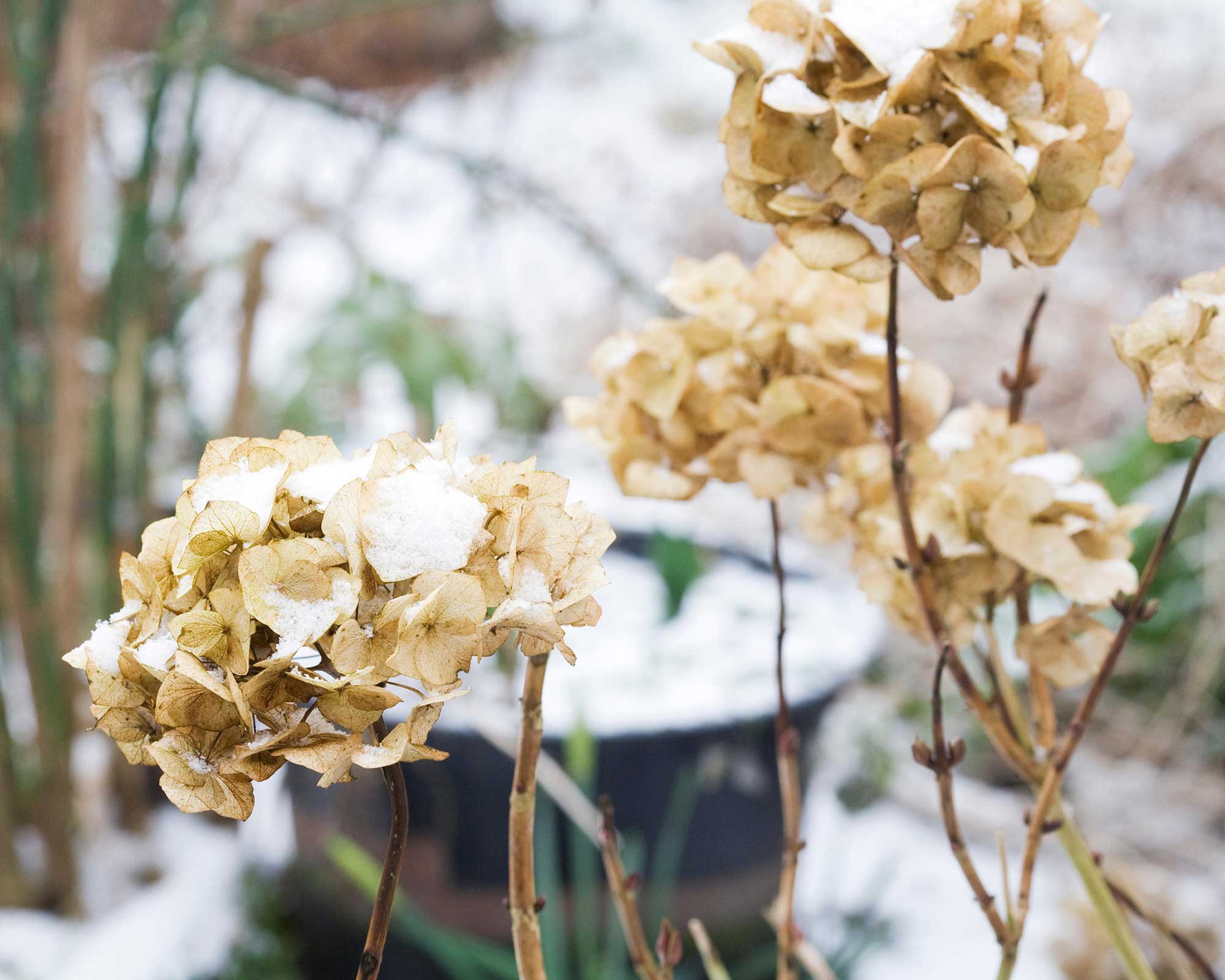
Leaving the flowerheads on your hydrangea will offer some winter protection
What should you do if your hydrangea is damaged by frost?
In very hard winters, you may find that cold and frost turns the leaves and stem tips of your hydrangea black. Don’t panic – as mentioned, these are hardy plants and once they start to grow again in spring, simply take your best secateurs and cut back the damaged growth to fresh green material and they will soon recover.
After very hard frosts you may find that you need to remove most of the stems of your hydrangea if they have been seriously blackened. It may look drastic, but as long as the roots have been protected, healthy new shoots will emerge from the soil in spring.
Leaves sometimes turn purple, too, after a cold snap, but again this is no cause for concern even though it is a sign that your plant is stressed by the cold. It will recover when warmer weather comes and soon produce fresh, green foliage.

Ruth is the gardening editor of Amateur Gardening magazine and spends her working days carrying out, writing about and photographing the tasks the readers should be carrying out each week, as well as testing many of the new products that arrive on the gardening market. She is horticulturally trained, with a qualification from the Royal Horticultural Society.
